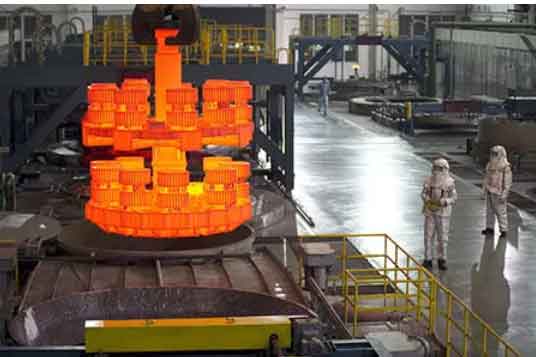The heat treatment process for helical gears shares many similarities with that of spur gears. However, due to the helical shape of the gear teeth, there are a few additional considerations to ensure proper heat treatment. Here are some key aspects to understand:

- Pre-heat Treatment Processes: Before the actual heat treatment, it is crucial to perform pre-heat treatment processes such as cleaning and preheating. Cleaning removes any contaminants from the gear surface, ensuring effective heat treatment. Preheating helps to reduce thermal shock during the subsequent heating process.
- Heat Treatment Techniques: The heat treatment techniques used for helical gears are generally similar to those used for spur gears. Common methods include carburizing, quenching and tempering, induction hardening, and nitriding. The selection depends on factors such as material composition, desired gear properties, and application requirements.
- Masking: Due to the helical shape of the gear teeth, masking is often necessary during heat treatment to protect certain areas of the gear. Masking prevents heat treatment from altering the geometry of critical surfaces such as the gear teeth flanks or the root fillet radius. This ensures that the gear maintains proper tooth engagement and strength.
- Temperature Control: Controlling the heating and cooling temperatures is crucial to achieve the desired material properties. It is important to follow specific temperature profiles, including heating rates, soaking times, and cooling rates, to ensure proper transformation of the material’s microstructure.
- Distortion Control: Helical gears are more susceptible to distortion compared to spur gears due to the asymmetrical tooth shape. Distortion can occur during the heat treatment process, resulting in misalignment and decreased performance. To minimize distortion, techniques such as fixturing, controlled cooling, and stress-relieving processes may be employed.
- Post-heat Treatment Processes: After the heat treatment, additional processes may be necessary to achieve the final gear specifications. These processes may include grinding, honing, or lapping to improve gear tooth surface finish, profile accuracy, and noise characteristics.
It is important to note that heat treatment is a complex process that requires expertise and careful consideration of various factors. Gear manufacturers or heat treatment specialists with experience in helical gears should be consulted to ensure proper heat treatment practices and achieve the desired gear strength and durability.
